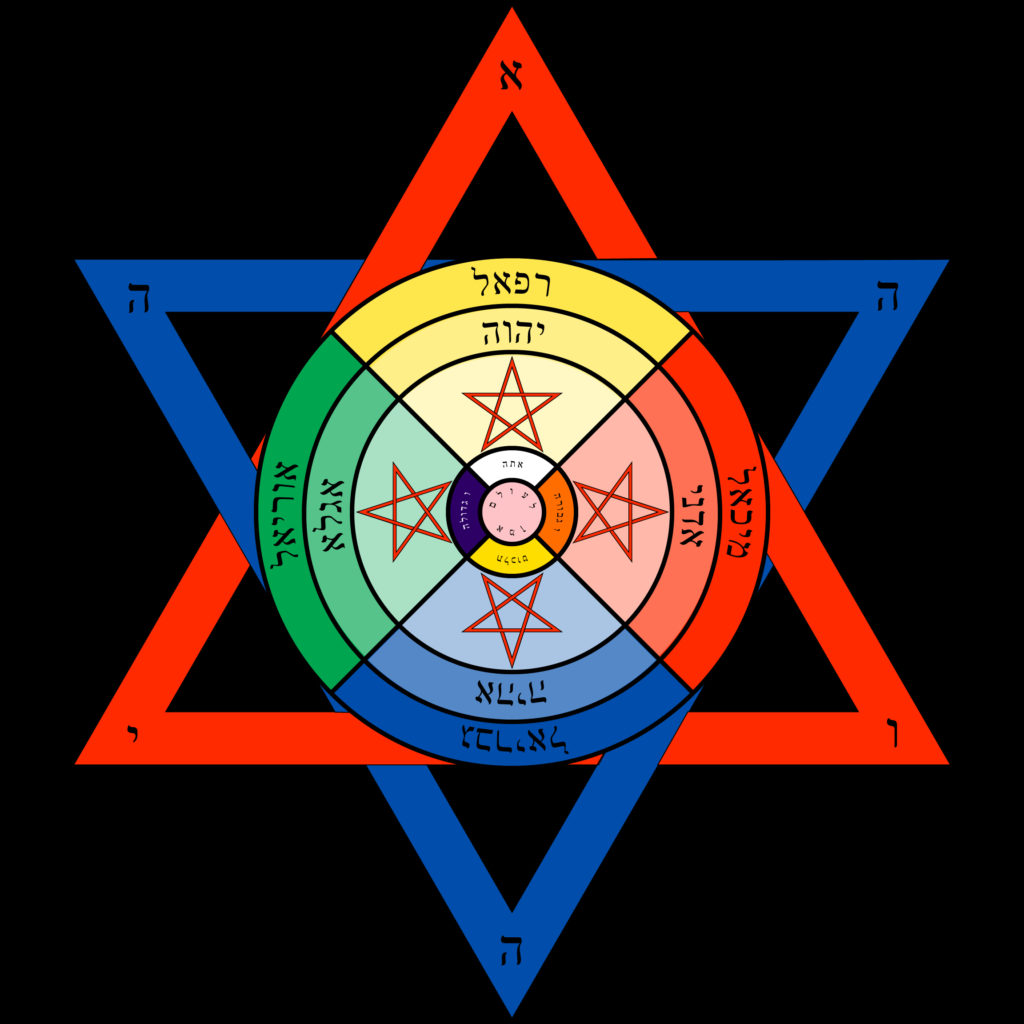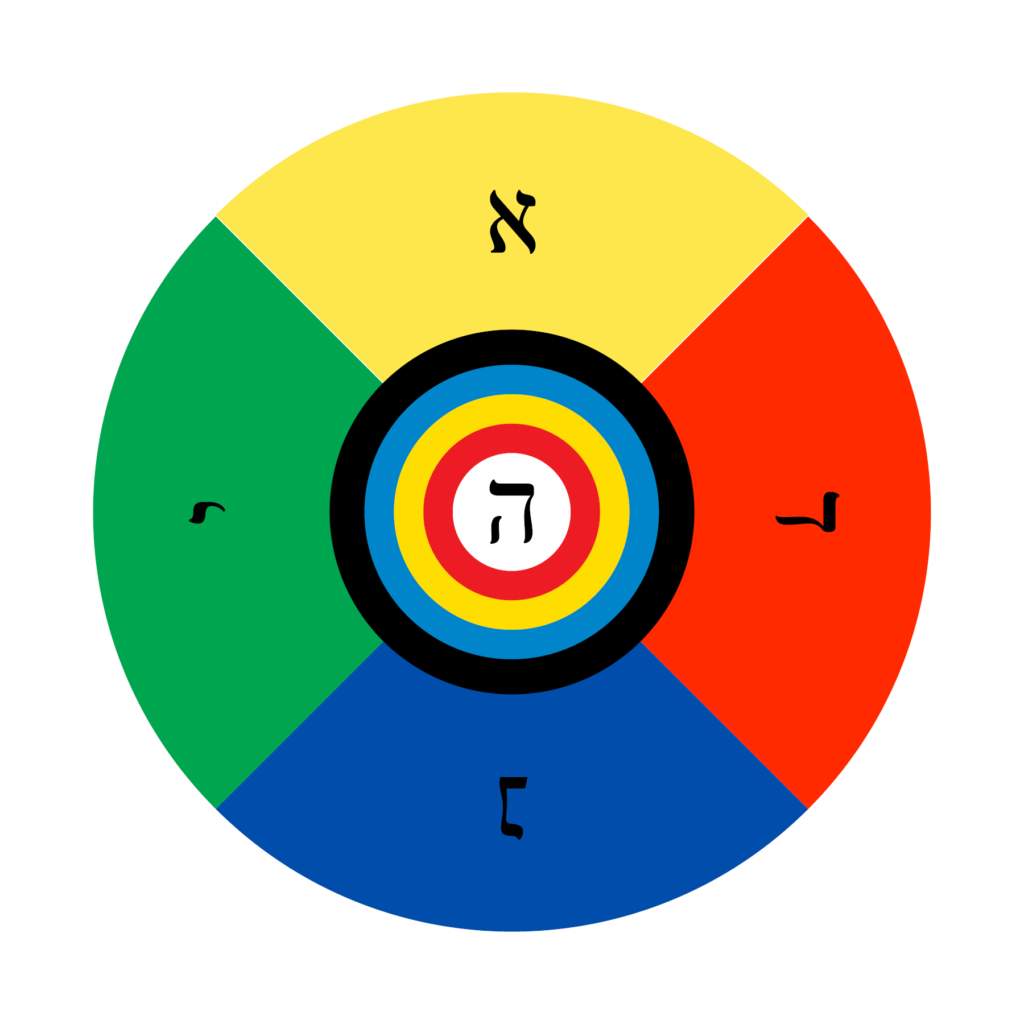
Those who regard this ritual as a mere device to invoke or banish spirits, are unworthy to possess it. Properly understood, it is the Medicine of Metals and the Stone of the Wise.
—Aleister Crowley, The Palace of the World
This is a visual representation of the Lesser Ritual of the Pentagram.
In the center is the Kabbalistic Cross with the Hebrew words Ateh, Malkuth, ve-Geburah, ve-Gedulah, le-Olahm, Amen. Ateh is white to represent Kether, Malkuth is yellow to represent Malkuth, ve-Geburah is orange to represent Geburah, ve-Gedulah is deep violet to represent Chesed, and le-Olahm/Amen is clear pink rose to represent Tiphareth.
Around the center are four orange scarlet pentagrams, one drawn in each quarter.
Arranged around that are the godnames, beginning at the top in the east and moving clockwise: YHVH, ADNI, AHIH, and AGLA.
Around that are the names of the Archangels invoked in each quarter: Raphael, Michael, Gabriel, and Auriel.
Each quarter is colored according to the element associated with it: air, fire, water, and earth.
Around that is the AHIHVH hexagram. As Crowley says in The Palace of the World:
[The six-rayed star] flames both above and beneath the magus, who is thus in a cube of 4 pentagrams and 2 hexagrams, 32 points in all. And 32 is [AHIHVH], the sacred word that expresses the Unity of the Highest and the Human.
For more on the significance of this hexagram, see Sepher Sephiroth, entries for 32 and 358, as well as Crowley’s introduction to Liber HHH in Magick.




